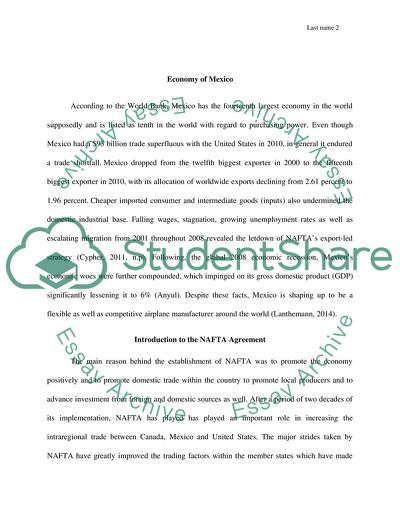Cite this document
(The Mexican Economy after NAFTA with a Focus on the Aerospace Industry Essay Example | Topics and Well Written Essays - 2500 words, n.d.)
The Mexican Economy after NAFTA with a Focus on the Aerospace Industry Essay Example | Topics and Well Written Essays - 2500 words. https://studentshare.org/macro-microeconomics/1825417-mexican-economy-after-nafta-with-a-focus-on-the-aerospace-industry
The Mexican Economy after NAFTA with a Focus on the Aerospace Industry Essay Example | Topics and Well Written Essays - 2500 words. https://studentshare.org/macro-microeconomics/1825417-mexican-economy-after-nafta-with-a-focus-on-the-aerospace-industry
(The Mexican Economy After NAFTA With a Focus on the Aerospace Industry Essay Example | Topics and Well Written Essays - 2500 Words)
The Mexican Economy After NAFTA With a Focus on the Aerospace Industry Essay Example | Topics and Well Written Essays - 2500 Words. https://studentshare.org/macro-microeconomics/1825417-mexican-economy-after-nafta-with-a-focus-on-the-aerospace-industry.
The Mexican Economy After NAFTA With a Focus on the Aerospace Industry Essay Example | Topics and Well Written Essays - 2500 Words. https://studentshare.org/macro-microeconomics/1825417-mexican-economy-after-nafta-with-a-focus-on-the-aerospace-industry.
“The Mexican Economy After NAFTA With a Focus on the Aerospace Industry Essay Example | Topics and Well Written Essays - 2500 Words”. https://studentshare.org/macro-microeconomics/1825417-mexican-economy-after-nafta-with-a-focus-on-the-aerospace-industry.


